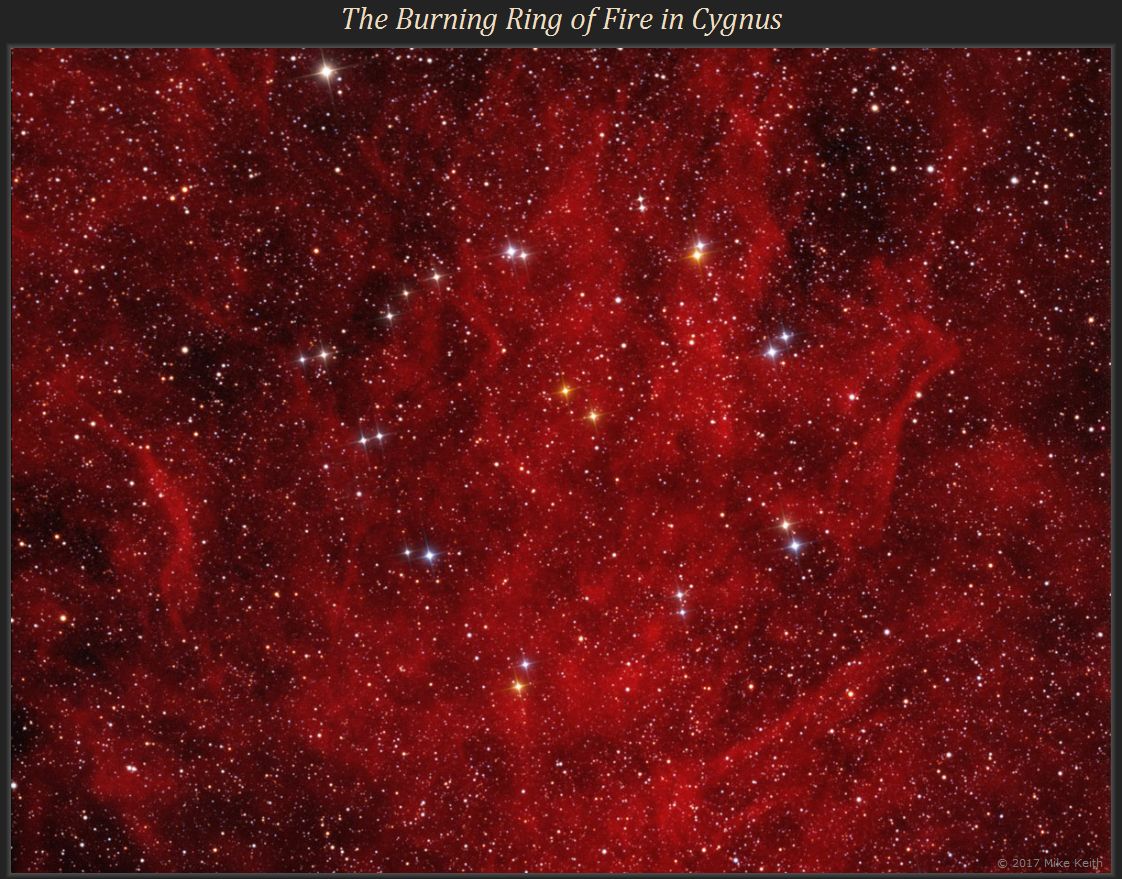
Click here for a higher-resolution image

Click here
for a higher-resolution image
If you enjoy double stars, then you should be introduced to this view in the constellation Cygnus, a "cluster" of 12 double stars that fits inside a circle of diameter ~25 arcminutes. This asterism is located at RA 20:04:12, Dec 38:09. Arranged in a rough diamond shape are 11 double stars (I'm counting the string of three in the upper left segment as one of the "doubles") with a 12th one (the two yellow stars) in the center.
Only three (well, two and a half) of these doubles are true double stars. At the very top of the diamond is SEI 835, a true double with magnitudes 10.5 and 11 a separation of 25". The next pair to its lower right is JH 1470, magnitudes 7.5 and 9.7 with separation 29". Finally, look at the wide pair at the 4 o'clock position on the ring. Just the top star of these two (the pale yellow one) is a true double, SEI 825, which is not fully resolved in this image since the separation of its components is just 5.5". This pair is, however, easily splittable in a telescope visually at high power. All the other doubles in the ring are optical doubles, physically-unrelated pairs of stars that lie at different distances and appear close to each other in the sky by accident.
Known variously over the years as The Fairy Ring and Chaple's Arc, my fanciful name for this object was inspired by this deep exposure which, as far is I know, is the first one to reveal this much of the background nebulosity. Flame-like nebulosity + ring of fiery stars = Burning Ring of Fire. The large flame filling most of the image is LBN (Lynds' Bright Nebula) 190; the extra bright wisp at the left side is LBN 192.